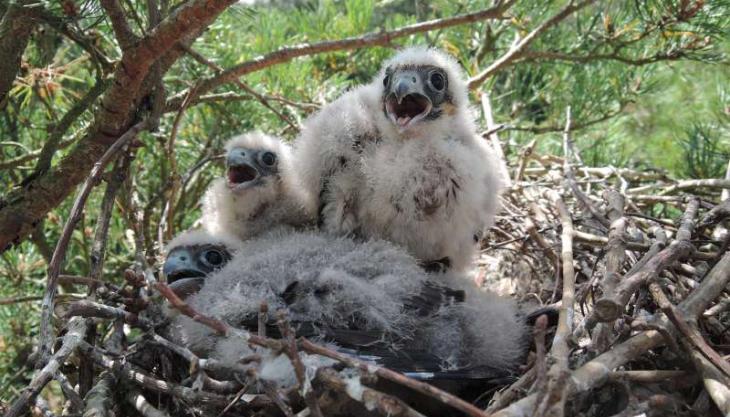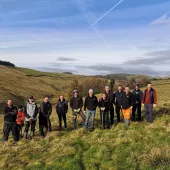Rare raptors find ideal home in the Park

Tarmac quarry restoration work attracts hobbies and osprey to Panshanger Park in Hertfordshire
2018 has been an outstanding year for birds of prey at Panshanger Park with the presence of two rare species – hobby and osprey. A pair of hobbies has successfully bred in the 400ha historic park, raising three chicks, whilst in September an adult osprey visited the park for a prolonged stay of two weeks.
Healthy populations of predators at the top of food webs have long been recognized as indicators of the well-being of ecosystems. As well as demonstrating the quality of the restoration work being undertaken by Tarmac in the park, the presence of these raptors also shows how rare species can coexist alongside carefully managed, sustainable recreational activities.
Panshanger Park, owned by Tarmac, was a sand and gravel quarry that is being progressively restored to a country park and nature reserve. Tarmac work in partnership with Herts and Middlesex Wildlife Trust to manage the park for both wildlife and people to enjoy, carefully planning restoration work for nature conservation, agriculture and recreation.
In 2017, Tarmac, along with their partner, Herts and Middlesex Wildlife Trust, received top honours at the Mineral Products Association (MPA) Restoration and Biodiversity Awards at the Royal Society in London. The partnership received the prestigious Cooper-Heyman Cup in recognition of its work to sensitively restore and manage the grade II* listed landscape at Panshanger Park.
Hobbies are migratory falcons that visit southern Britain to breed before returning to sub-Saharan Africa for the winter. They feed on dragonflies and damselflies, as well as smaller birds, including martins and swallows, catching their prey in mid-air and, with insect prey, feeding on the wing.
There are around 2,000 pairs of hobbies in the UK and the health of the expanding population has been linked to the increase in their dragonfly prey around restored gravel pits such as those being created by Tarmac at Panshanger Park.
Tarmac’s Enrique Moran Montero, restoration manager at Panshanger, said: ‘We are delighted to see these rare falcons in the park. Their presence is a reflection of the high-quality habitats that have been created and allowed to establish and flourish.’
Following consultation with species-protection experts, a series of special Hobby Watch events was hosted by Tarmac so that members of the public could view the hobbies through telescopes and learn more about them and the protection that they require.
Murray Brown, Panshanger Park’s people and wildlife officer, said: ‘We were thrilled to have a family of hobbies at Panshanger. They are a joy to watch; capable of rapid bursts of speed and breathtaking turns as they hunt.’
Ospreys have also been stopping at Panshanger Park for several years as they follow their long migration routes between northern Europe and tropical Africa. This year, an adult bird stayed for two weeks, affording birdwatchers, photographers and visitors superb views from a bespoke viewing platform provided by Tarmac.
‘The sight of a fishing osprey plunging feet first into a lake to catch large fish in its specially adapted talons has to rank among the most awe-inspiring of wildlife experiences in Britain,’ Mr Brown enthused. ‘We’re so pleased that this spectacle could be enjoyed by so many people at Panshanger Park.’







